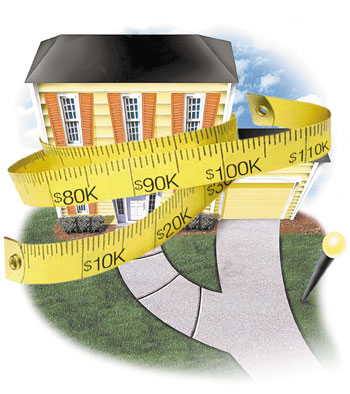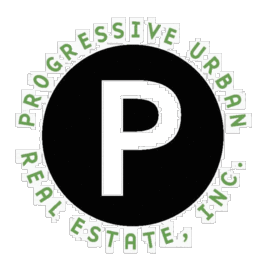
Confronting New Appraisal Rules, Impact on Housing
By Paul Gores
RISMEDIA, July 2, 2009-(MCT/RISMedia)-When Chad Gartzke put his three-bedroom ranch home in Wauwatosa up for sale for $196,000, one of the first people to view it liked the house so much she was willing to pay $196,500 to make sure she got it.
Despite a tough residential real estate market, it looked liked smooth sailing for Gartzke, who already had his eye on a bigger house in Richfield for him and his family.
Then the appraisal came in.
The appraiser concluded the house was worth $190,000, a judgment based in part on information about sales of “comparable” area homes. In turn, the buyer’s mortgage lender didn’t want to finance a house for more than its appraised value.
After the appraiser refused to reconsider what Gartzke and his real estate agent considered a flawed valuation, they were left to try to salvage the sale with a new deal.
The buyer ultimately was able to come up with another $1,000 for the down payment, and Gartzke reluctantly lowered the selling price to $191,000.
“Honestly, had we not had another house lined up that we wanted to purchase, we probably would have just called the whole deal off and tried our luck with another buyer and another appraiser,” Gartzke said.
Gartzke’s case isn’t an isolated one, real estate and mortgage professionals say. They contend home values, already hurt by the bad economy, sometimes are being worsened unnecessarily by low appraisals stemming from new rules meant to prevent the kind of puffed-up valuations and conflicts of interest that helped fuel the housing bubble.
Under an industry code of conduct that took effect May 1, mortgage brokers, real estate agents and loan officers are prohibited from selecting home appraisers. In order to avoid trouble with the rule, called the Home Valuation Code of Conduct, many lenders are hiring companies that put together pools of appraisers and then assign them to individual housing transactions, they say. The code applies to mortgages that will be sold to Fannie Mae or Freddie Mac.
Real estate agents and mortgage brokers say it has led to an increase in questionable or stingy valuations by appraisers who are leery of producing estimates that are too high, or who may be from outside the housing market and unfamiliar with the nuances of neighborhoods to which they’re sent.
“On one of the condos we just got an accepted offer for in the West Bend market, the appraiser that went out there was somebody from Racine,” said Scott Stortz, the owner-broker of Star Properties in Jackson.
Home appraisals that come in at lower-than-agreed-upon sale prices can kill deals, some say. At the very least, industry professionals say, they are delaying sales and undermining momentum that the housing market needs to regain. They say the drop in appraised values often is particularly large for high-end homes for which there now are few recent comparable sales, and argue the appraisal can cripple plans to sell or refinance — even when everything else seems in order.
“The appraisal is really the one and only subjective item in the loan file because it’s the opinion of the appraiser,” said Brian Wickert, president of Accunet Mortgage in Butler.
Nationwide impact
Last week, Lawrence Yun, chief economist for the National Association of Realtors, said poor appraisals are “stalling transactions” nationwide.
“Lenders are using appraisers who may not be familiar with a neighborhood, or who compare traditional homes with distressed and discounted sales,” Yun said. “In the past month, stories of appraisal problems have been snowballing from across the country with many contracts falling through at the last moment. There is danger of a delayed housing market recovery and a further rise in foreclosures if the appraisal problems are not quickly corrected.”
Congress has been listening to testimony on the issue.
The appraisers, however, say their valuations simply reflect what’s happened to the market over the last few years.
Bill Garber, director of government and external relations for the national Appraisal Institute, said appraisals are meant to be a risk-management tool for lenders “who typically don’t want to lend beyond what the value of the collateral is worth.”
Late last week, Representatives Childers (D-MS) and Miller (R-CA) introduced legislation requesting an 18 month moratorium on the Home Valuation Code of Conduct (HVCC).
“The introduction of this legislation is a victory for consumers and members of the industry alike,” said NAMB President Marc Savitt, CRMS. “We thank Congress for recognizing the need to address the issue of appraiser coercion without causing undue harm to borrowers or diminishing competition in the marketplace.”
NAMB has taken an active stance against the HVCC since its introduction in March of 2008. “We urge Congress to pass H.R. 3044 as soon as possible to ensure that more borrowers will not be negatively impacted by this de facto rule,” stated Savitt. “In the period of time since its implementation, the HVCC has increased costs to consumers and decreased the quality of appraisals and has provided a level of uncertainty in an ailing housing market. Tens of thousands of consumers have already been robbed of their opportunity to enjoy historically low rates by Attorney General Andrew Cuomo’s rule.”
“Appraisers don’t make the market. They simply report what is occurring within the markets, and they are sort of the eyes and ears of the lender,” said Garber, whose organization is the nation’s largest association of appraisers. “In the end, it’s really a lending decision.”
Garber said that failure to enforce rules meant to keep appraisers separate from real estate agents and mortgage brokers-who, of course, make money when home sales and refinancings are successful-had put appraisers “under fire from these parties with a vested interest for many years.”
“People who stand to benefit by the closing of these loans are no longer in the position they once were in terms of dictating the appraisal process,” Garber said.
Response too late
There’s little doubt there was collusion nationwide in past years between some appraisers and lenders, which led to abuse, said Steve La Due, vice president of business development for Waterstone Mortgage in Pewaukee. It wasn’t widespread here, he said, but everyone must obey the new rules.
“The government’s response to appraisal problems is they are locking the barn door after the horse is gone in a big way,” he said.
Mike Polega of Re/Max Realty 100, who was Gartzke’s Realtor, said he’s concerned that low appraisals are having a negative effect on a real estate market that had been picking up.
“I’m not proclaiming that a half-million homes or more were lighting the world on fire, but that engine at the lower end was starting to build back up and there was some confidence-building going on. It’s this kind of thing that dampens that kind of spirit,” Polega said. “To me, that’s the bigger consequence of this.”
Copyright © 2009, Milwaukee Journal Sentinel
Distributed by McClatchy-Tribune Information Services.



